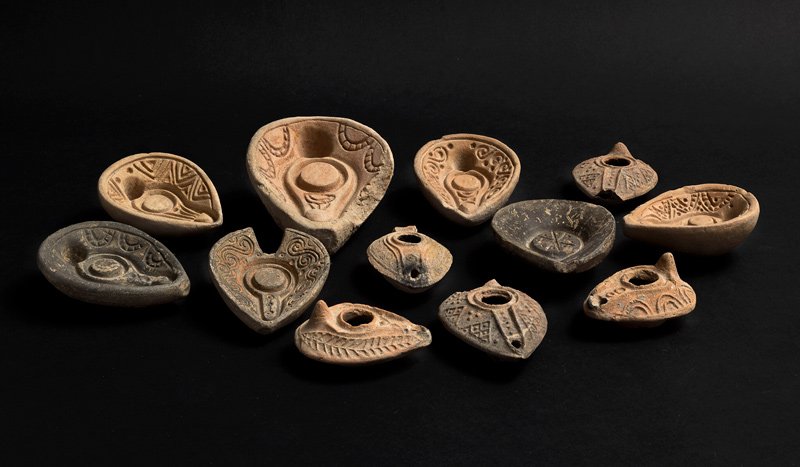Editor’s note: Just in time for the festival of lights, this special exhibit has just opened at the Israel Museum, and features a rare cache of objects found by a Hebrew U archaeologist. Prof. Oren Gutfield, a teaching fellow at HU’s Institute of Archeaology, is also the head of the Israel Archeaological Services, and led the excavation that discovered the lamps, molds, kiln, and oil lamp workshop from ancient Tiberias.
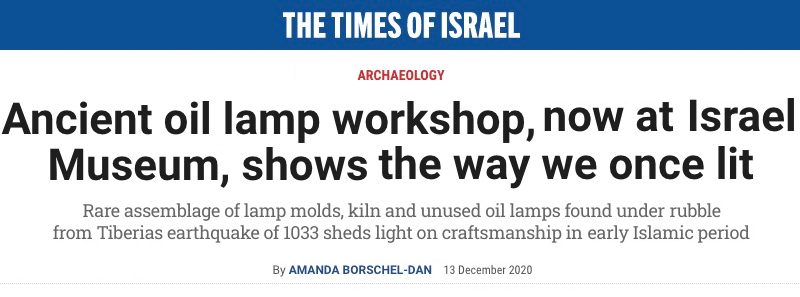
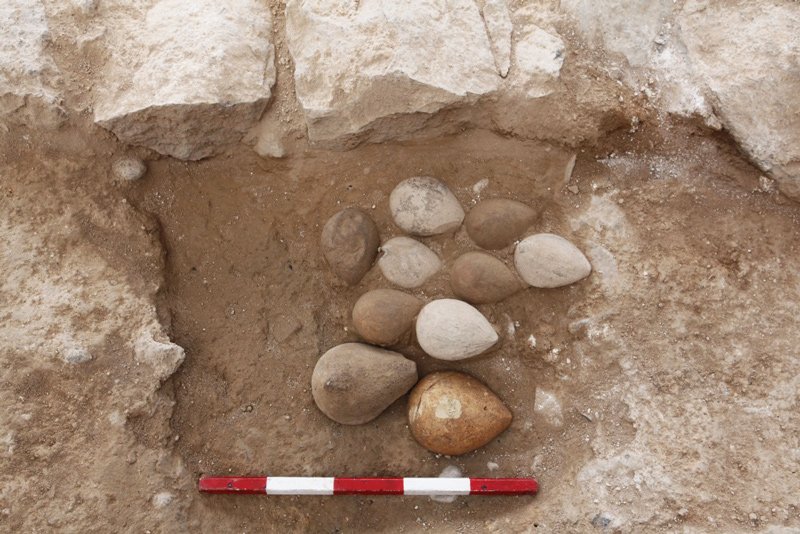
A complete rare, early Islamic-era oil lamp workshop from ancient Tiberias on the shores of the Sea of Galilee has gone on display at the Israel Museum in Jerusalem.
Ten complete lamp molds, a kiln, and several intact, unused oil lamps dating from circa the mid-7th century to the 11th century were found under debris from a series of earthquakes during excavations this summer, conducted by the Hebrew University Institute for Archaeology’s Israel Archaeological Services.
The complete assemblage of the workshop offers “a rare glimpse into work processes in our area in ancient times,” said Liza Lurie, the Israel Museum’s curator for Islamic art and archaeology.
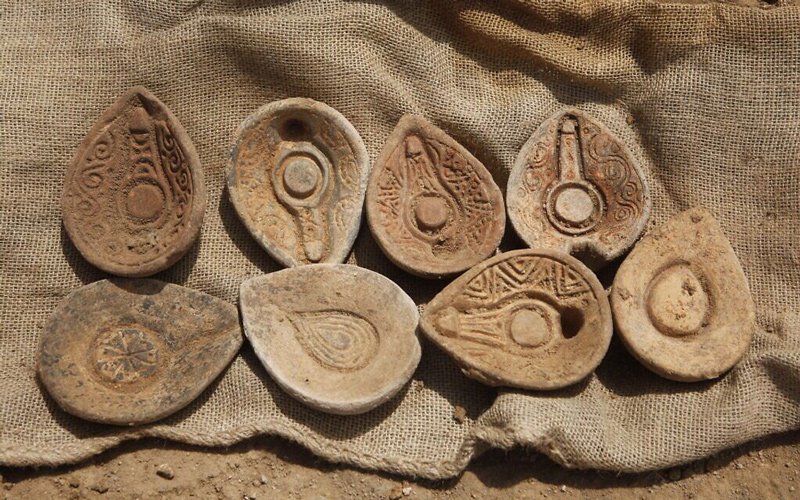
Portions of the find — some still covered with dirt — are now on display in a temporary exhibit at the entrance to the Israel Museum’s archaeology wing, just in time for Hanukkah, a holiday infused with symbolism around the burning of oil lamps.
In the rush to show the collection in time for the Festival of Lights, the items have not yet been scientifically documented or studied, although they were measured and photographed in situ.
Visitors to the exhibit will be able to glean how craftsmen turned clay into lamps more than a millennium ago — skills that are increasingly relevant as artisans return to traditional roots in their work, Lurie said.
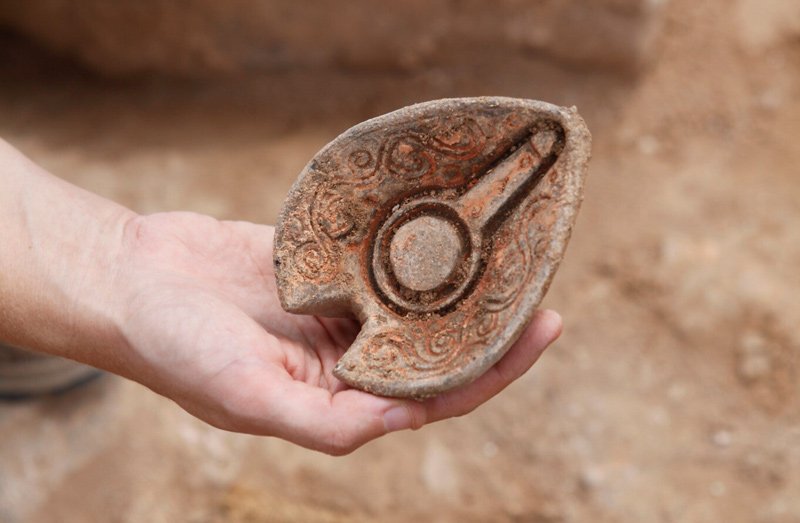
The lamps and molds are etched with ornate floral and geometric designs, including a five-sided star. One mold is etched with the Arabic word for God, “Allah.”
They were discovered in a neighborhood of residences and workshops that was destroyed during a series of earthquakes during the 11th century, according to a Hebrew University statement.
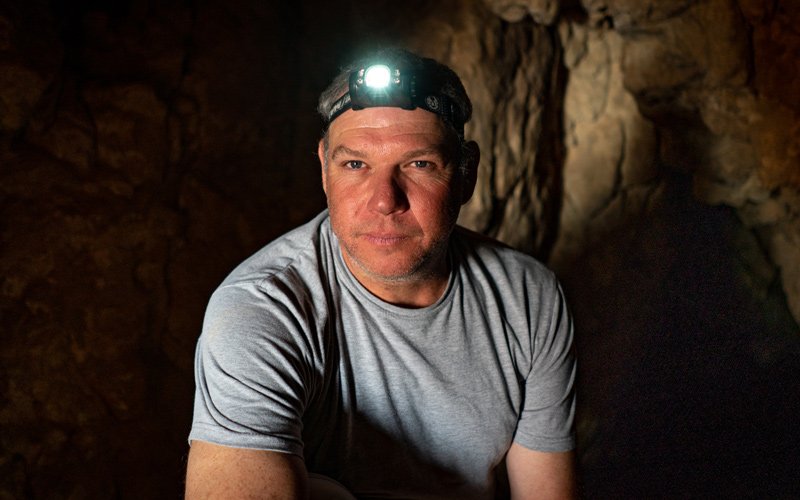
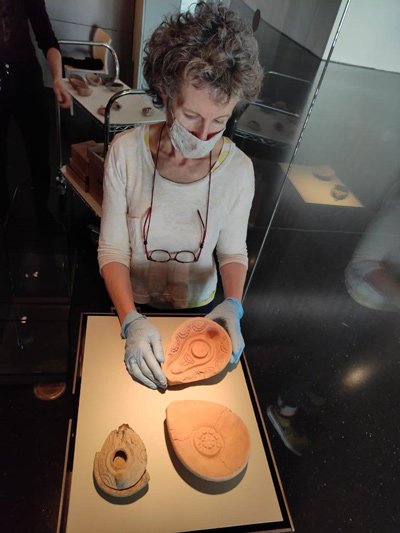 Hebrew University’s Oren Gutfeld, the head of the Israel Archaeological Services, noted that the findings indicate a style of living in which craftsmen and their workshops were integrated into neighborhoods.
Hebrew University’s Oren Gutfeld, the head of the Israel Archaeological Services, noted that the findings indicate a style of living in which craftsmen and their workshops were integrated into neighborhoods.
In addition to the ceramic workshop, which included a kiln, the archaeologists uncovered five septic tanks for human waste, and a well dug down to the level of the Sea of Galilee, some 3.5 meters (11.5 feet) deep.
Gutfeld said the team — which included field archaeologists Michal Haber and Tal Rogovenski, as well as archaeologists from the Israel Antiquities Authority — discovered fallen ornate stone pillars around the well, which he believes was the center of a lush courtyard.
“The debris was excavated and seems to be impressive testimony to the earthquake of 1033 in which Tiberias was destroyed,” Gutfeld said in a statement.
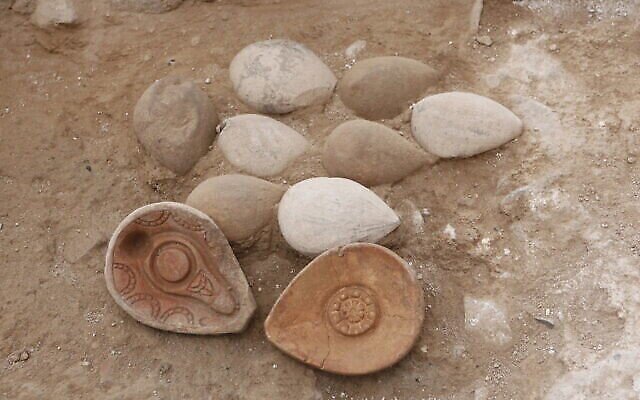
It will take a bit of planning for those wanting to check out the exhibit, with the Israel Museum forced to limit crowds in order to comply with coronavirus regulations. Visitors must book a time and buy tickets in advance.
Normally, the museum would be bustling with visitors on Hanukkah break, but has seen only 5,000 visitors a day in the first eight days since reopening.
Those who do make it to the museum will also be treated to the largest collection of menorahs in the world, which is on display in the museum’s permanent collection, museum director Ido Bruno said in a statement.
